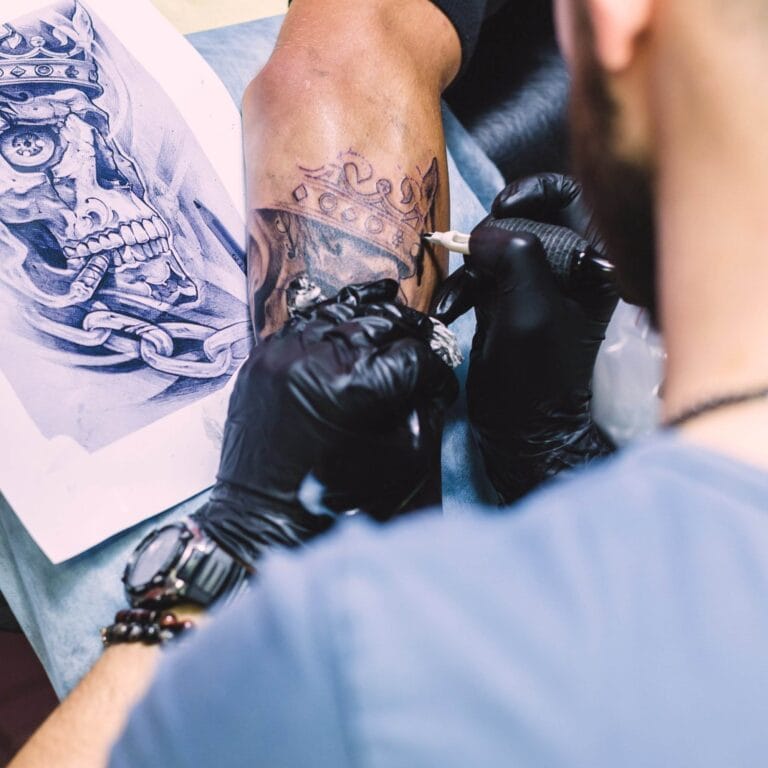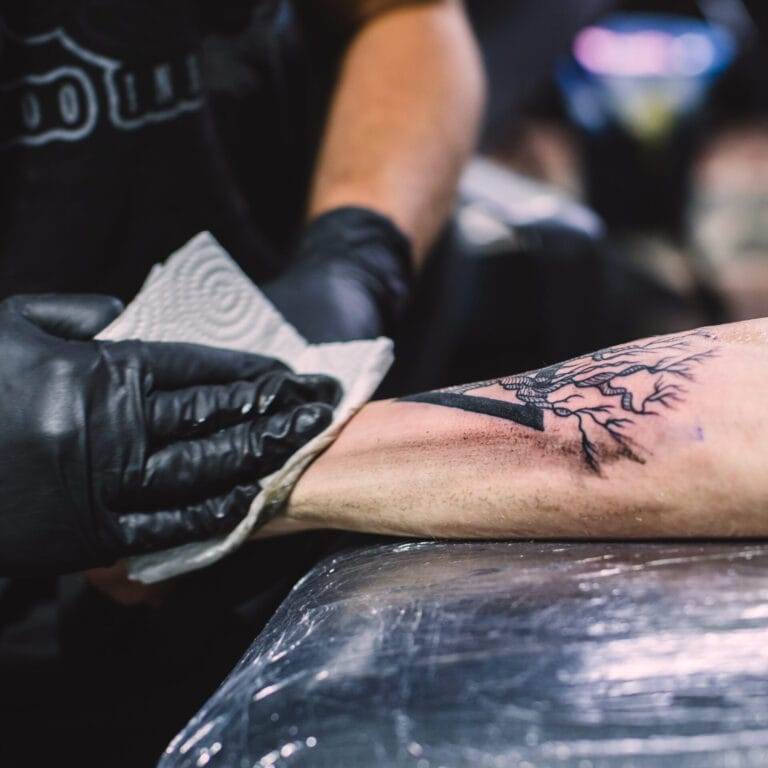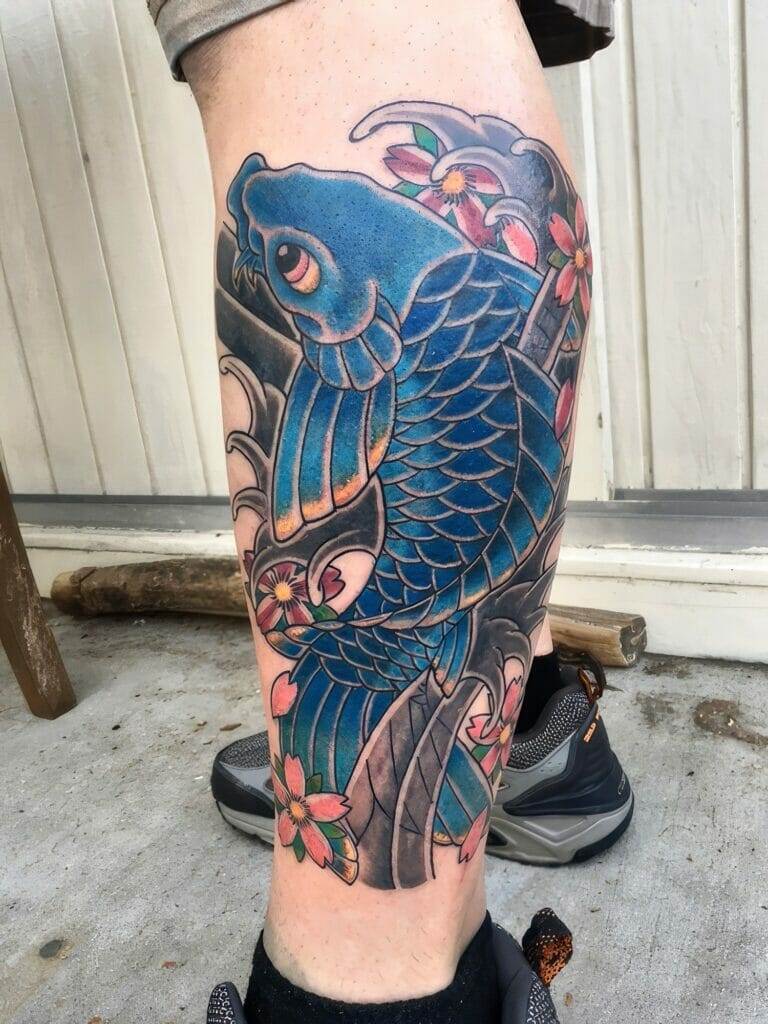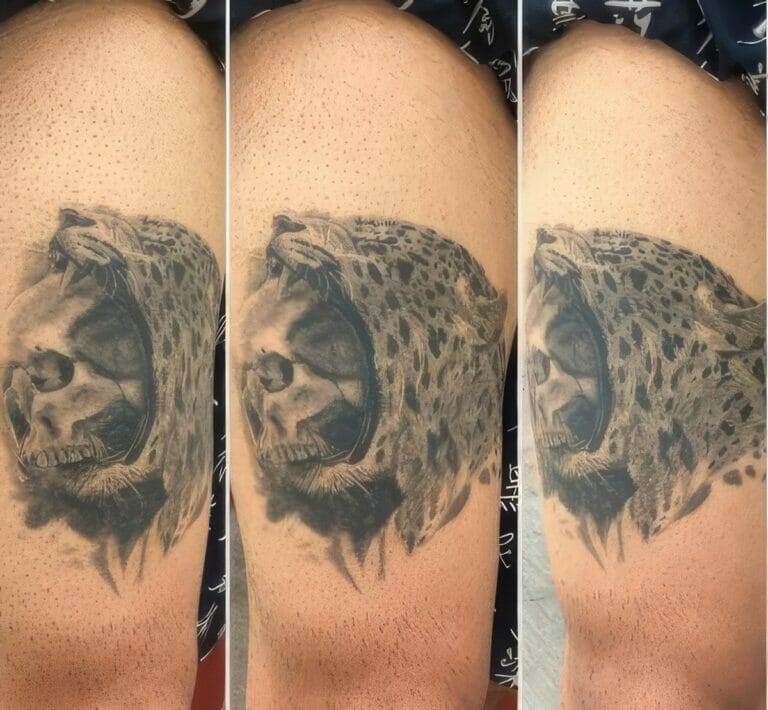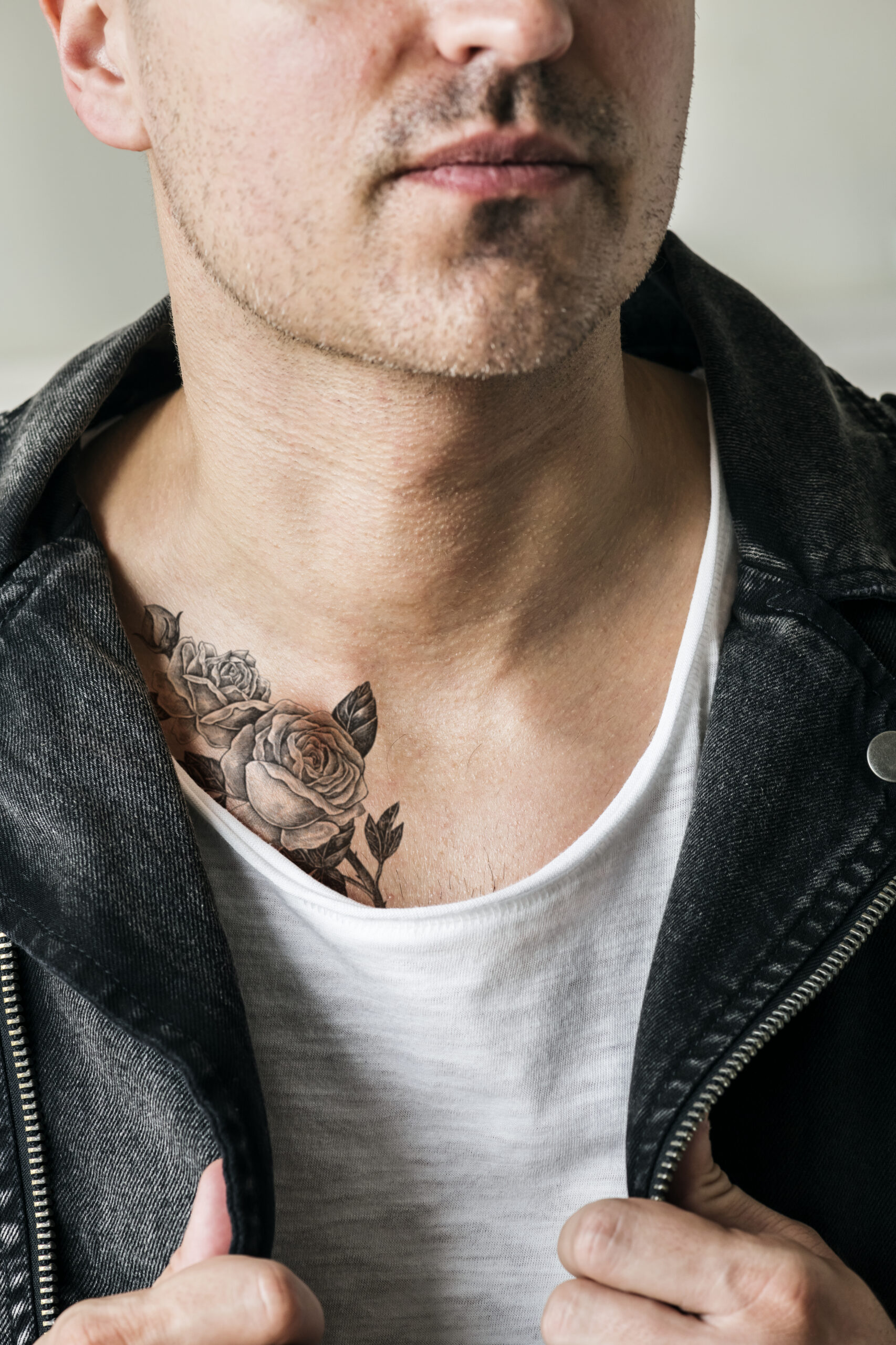
In recent years, neck tattoos have surged in popularity, becoming a prominent trend within the tattoo industry. This rise can be attributed to various factors, including the increasing acceptance of body art in mainstream culture and the influence of celebrities and social media. As more individuals seek to express their identity and personal stories through tattoos, the neck has emerged as a favored canvas.
The visibility of neck tattoos allows for bold statements and unique designs that can be easily showcased, making them an appealing choice for those looking to make a lasting impression. Moreover, the evolution of tattoo artistry has played a significant role in this trend. Artists are now pushing the boundaries of creativity, offering intricate designs that transform the neck into a work of art.
From delicate floral patterns to striking geometric shapes, the variety of styles available has attracted a diverse clientele. As tattoo conventions and online platforms continue to celebrate this form of self-expression, neck tattoos have solidified their place in contemporary culture, appealing to both seasoned tattoo enthusiasts and newcomers alike.
Key Takeaways
- Neck tattoos are becoming increasingly popular in the tattoo industry, reflecting a growing trend in body art.
- Visible neck tattoos can impact first impressions and professional image, potentially affecting job opportunities and advancement.
- Job seekers and employees should consider how neck tattoos may be perceived in their chosen career field and company culture.
- Societal attitudes towards visible tattoos have evolved, but cultural perceptions still vary widely, influencing professional opportunities.
- Strategies for managing the visibility of neck tattoos include concealment and professional presentation, depending on the workplace environment.
Neck Tattoos and Visibility: How They Impact First Impressions and Professional Image
The visibility of neck tattoos can significantly influence first impressions, often serving as a focal point in social interactions. In many cases, individuals with neck tattoos may be perceived as more adventurous or creative, which can lead to both positive and negative assumptions. While some may view these tattoos as a symbol of individuality and artistic expression, others might associate them with rebellion or nonconformity.
This dichotomy highlights the complex nature of visible tattoos and their ability to shape perceptions in various contexts. In professional settings, the impact of neck tattoos on one’s image can be even more pronounced. Employers and colleagues may form opinions based on appearance alone, which can affect workplace dynamics and opportunities for advancement.
While some industries embrace a more relaxed attitude towards personal expression, others maintain traditional views that may not favor visible tattoos. As such, individuals with neck tattoos must navigate these perceptions carefully, balancing their desire for self-expression with the expectations of their professional environment.
Career Considerations: How Neck Tattoos Can Affect Job Opportunities and Advancement

The presence of neck tattoos can have tangible implications for job opportunities and career advancement. In certain fields, particularly those that prioritize professionalism and conservative appearances—such as finance, law, or corporate environments—visible tattoos may be viewed unfavorably. Candidates with neck tattoos might find themselves at a disadvantage during the hiring process, as employers may unconsciously favor applicants who conform to traditional standards of appearance.
Conversely, industries such as fashion, entertainment, and creative arts often celebrate individuality and self-expression, making neck tattoos less of a barrier to employment. In these sectors, having visible tattoos can even enhance an individual’s appeal, signaling creativity and a willingness to stand out. However, it is essential for individuals to research their desired industry’s culture and norms regarding tattoos to make informed decisions about their body art and its potential impact on their career trajectory.
Cultural and Societal Perceptions: The Evolution of Attitudes Towards Visible Tattoos
Cultural attitudes towards visible tattoos have evolved significantly over the past few decades. Once considered taboo or associated with marginalized groups, tattoos have gradually gained acceptance in mainstream society. This shift can be attributed to various factors, including the rise of tattooed celebrities, increased visibility in media, and changing societal norms surrounding self-expression.
As more people embrace body art as a legitimate form of personal expression, the stigma surrounding visible tattoos has diminished. Despite this progress, societal perceptions remain complex and varied. While many individuals now view tattoos as an art form or a means of storytelling, others still hold onto traditional beliefs that associate them with negative traits.
This dichotomy can create challenges for those with neck tattoos, as they may encounter both acceptance and prejudice depending on the context. Understanding these cultural dynamics is crucial for individuals navigating their personal choices regarding body art in relation to societal expectations.
Managing the Visibility of Neck Tattoos: Strategies for Concealment and Professional Presentation
For individuals with neck tattoos who wish to manage their visibility in professional settings, several strategies can be employed. One common approach is to use clothing to cover the tattoo when necessary. High-collared shirts or scarves can effectively conceal neck tattoos during interviews or formal events, allowing individuals to present themselves in a manner that aligns with professional expectations.
Additionally, choosing appropriate attire that reflects both personal style and workplace culture can help strike a balance between self-expression and professionalism. Another option for managing visibility is the use of makeup or temporary tattoo covers designed specifically for concealing body art. These products can provide a quick solution for those who need to hide their tattoos for specific occasions without compromising their personal style on other days.
Ultimately, finding ways to manage visibility while remaining true to oneself is essential for individuals navigating the complexities of neck tattoos in professional environments.
The Role of Company Policies: How Employers Address Tattoos in the Workplace
Company policies regarding tattoos vary widely across industries and organizations. Some companies have explicit guidelines that dictate acceptable appearance standards, including restrictions on visible tattoos. These policies are often rooted in maintaining a certain image or brand identity that aligns with customer expectations.
In contrast, other organizations adopt a more relaxed approach, recognizing that personal expression can contribute positively to workplace culture. Employers are increasingly aware of the changing attitudes towards body art and may choose to reevaluate their policies accordingly. Many companies now prioritize inclusivity and diversity, understanding that allowing employees to express themselves through tattoos can foster a more authentic work environment.
However, it remains essential for individuals to familiarize themselves with their employer’s stance on tattoos before making decisions about body art that could impact their professional lives.
Tattoo Removal Options: Exploring the Possibility of Removing or Covering Neck Tattoos
For those who find themselves regretting their neck tattoos or facing challenges in professional settings due to their visibility, tattoo removal options are available. Laser tattoo removal has become a popular choice for individuals seeking to eliminate unwanted ink. This procedure involves using laser technology to break down the ink particles in the skin, allowing the body to gradually absorb them over time.
While effective, laser removal can require multiple sessions and may not guarantee complete removal. Alternatively, some individuals opt for cover-up tattoos as a way to transform an existing design into something new and meaningful. Skilled tattoo artists can create intricate designs that incorporate or obscure the original tattoo, allowing individuals to maintain their body art while addressing any concerns about visibility or personal satisfaction.
Whether through removal or creative cover-ups, there are options available for those looking to manage their neck tattoos.
Navigating the balance between personal expression and professional image is a nuanced challenge for individuals with neck tattoos. On one hand, body art serves as a powerful form of self-expression that reflects one’s identity, beliefs, and experiences. On the other hand, professional environments often come with expectations regarding appearance that may conflict with personal choices regarding body art.
To successfully navigate this balance, individuals must consider their workplace culture and industry norms while remaining true to themselves. Open communication with employers about personal expression can foster understanding and potentially lead to more inclusive policies regarding visible tattoos. Ultimately, finding harmony between personal identity and professional expectations is key for those with neck tattoos seeking fulfillment in both their personal lives and careers.
FAQs
What are the visibility factors to consider when tattooing the neck?
Visibility factors to consider when tattooing the neck include the potential for the tattoo to be visible in professional settings, the impact on first impressions, and the potential for the tattoo to affect career opportunities.
How do neck tattoos impact career factors?
Neck tattoos can potentially impact career factors by affecting job opportunities, professional image, and workplace dress codes. Some employers may have policies against visible tattoos, which could limit job prospects for individuals with neck tattoos.
Are there professions where neck tattoos are more accepted?
Certain professions, such as those in the creative arts, entertainment industry, or certain niche industries, may be more accepting of visible tattoos, including neck tattoos. However, it ultimately depends on the specific employer and industry norms.
What are some potential consequences of getting a neck tattoo?
Potential consequences of getting a neck tattoo include limited job opportunities, negative first impressions, and the need to cover up the tattoo in professional settings. Additionally, some individuals may experience social stigma or discrimination due to their visible tattoos.
Are there ways to mitigate the impact of a neck tattoo on career prospects?
Some individuals may choose to mitigate the impact of a neck tattoo on their career prospects by selecting a design that can be easily covered with clothing or accessories, or by seeking out employers and industries that are more accepting of visible tattoos. Additionally, some individuals may opt for temporary or semi-permanent tattoos to have more flexibility in professional settings.






